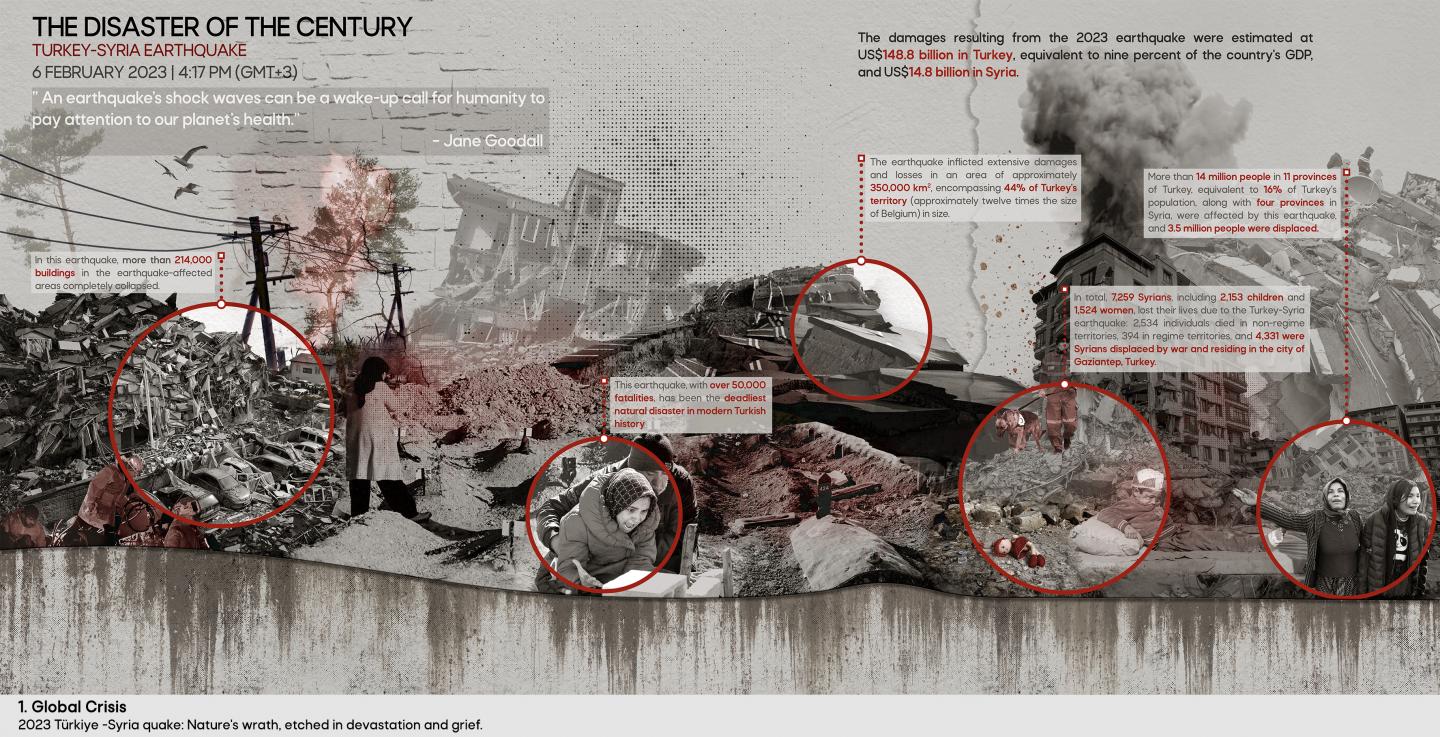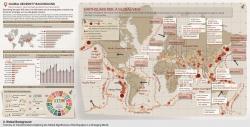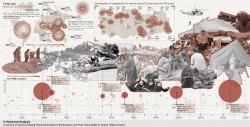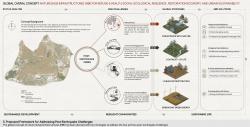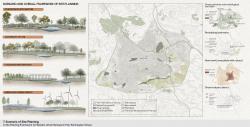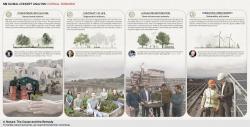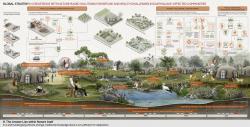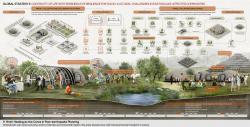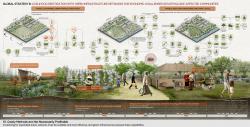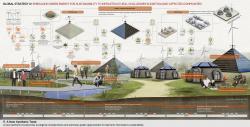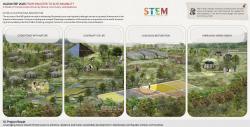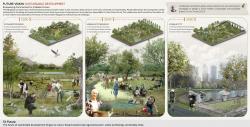Project Statement
The catastrophic earthquakes that struck Turkey and Syria in February 2023 served as a stark reminder of the devastating power of natural disasters and the profound impacts they may have on human settlements. With a combined magnitude of 7.8 and 7.6 on the Richter scale, these twin earthquakes unleashed a trail of destruction that left a mark on the region for years to come. The death toll surpassed 59,000, with countless more injured and displaced. Cities, especially Gaziantep, were reduced to rubble, their infrastructure shattered, and their communities deeply scarred. This project addresses the challenges of post-earthquake life revitalization, including refuge and health, social and cultural, economic, and infrastructure through the use of Nature-Based Infrastructures (NBI) global concept.
Project Narrative
This project encompasses a comprehensive study of nature-based infrastructures (NBI), a global concept that leverages the unique opportunities presented by nature to address the city's post-earthquake challenges.
Proposed Site Selection
22,871 km² temporary settlement in Gaziantep’s SE/W peripheries strategically near major thoroughfares.
Project Global Strategies
1. Coexistence with Nature
Low-tech super adobe local materials. Volunteer-driven community engagement.
2. Continuity of Life
Minimal footprint; multifunctional spaces balancing human/wildlife needs.
3. Livelihood Restoration
Green infrastructure protects resources; water/material recycling supports local economies.
4. Embracing Green Energy
Solar/wind power replaces fossil fuels; ecological aesthetics shape settlements.
2023
2025
Project Location
Locations City: Gaziantep
State / Province: Gaziantep
Country: Turkey
1. Structural System
Primary Material: Super Adobe earthbag domes (low-tech, seismic-resistant)
Construction: Locally sourced clay-rich soil filled in tubular bags, stabilized with 5-10% lime cement
Thermal Performance: Passive cooling/heating via thermal mass (R-value: ~2.5 per 30cm thickness)
2. Water Management
Rainwater Harvesting: 10,000 L ferrocement tanks per 5 dwellings
Greywater Recycling: Constructed wetlands for 70% reuse in irrigation
Potable Water: Solar-powered reverse osmosis units (output: 20 L/h per unit)
3. Energy Infrastructure
Primary Source: Hybrid solar-wind microgrids (peak capacity: kW/km²)
Backup: Biodigesters converting organic waste to biogas (yield: 0.5m³ gas/kg waste)
4. Waste-to-Resource Systems
Organic Waste: Vermicomposting → fertilizer for food nurseries (conversion rate: 60% in 45 days)
Recycling: Material recovery hubs targeting 80% construction waste reuse
5. Ecological Integration
Green Corridors: 30% of the site area dedicated to native vegetation
Biodiversity: Habitat islands for pollinators and small wildlife
6. Agricultural Framework
Crop System: Drought-resistant economic species (e.g., pistachio, olive) with drip irrigation
Soil Revitalization: Biochar-amended terra preta technique (pH stabilization: 6.5–7.0)
7. Site Specifications
Parameter Value
Total Area: 22,871 km²
Location: SE/W peripheries of Gaziantep
Proximity: ≤2km to major highways
Settlement Typology: Decentralized clusters
Key Technical Principles Embedded:
Circularity: Closed-loop water/waste/energy flows (e.g., greywater → wetlands → crops).
Bioclimatic Design: Super Adobe’s high thermal mass reduces energy needs by 40%.
Disaster Resilience:
Seismic stability: Dome geometry distributes shear forces.
Redundant systems: Microgrid biogas backup.
Scalability: Modular units allow phased expansion (1 cluster = 50 dwellings).
Design Team: Reza Farhadi, Maryam Noroozi, Amir Rahsaz, Mahshid Del Avar, Hengameh Ghasemi
Faculty Advisors: Ahmad Pourahmad, Mahdi Khansefid
University of Tehran
